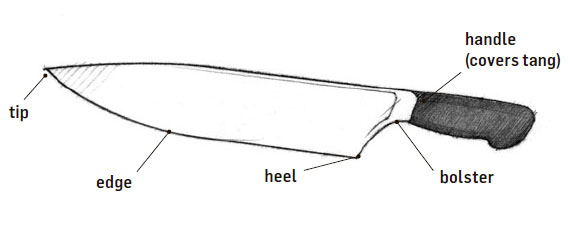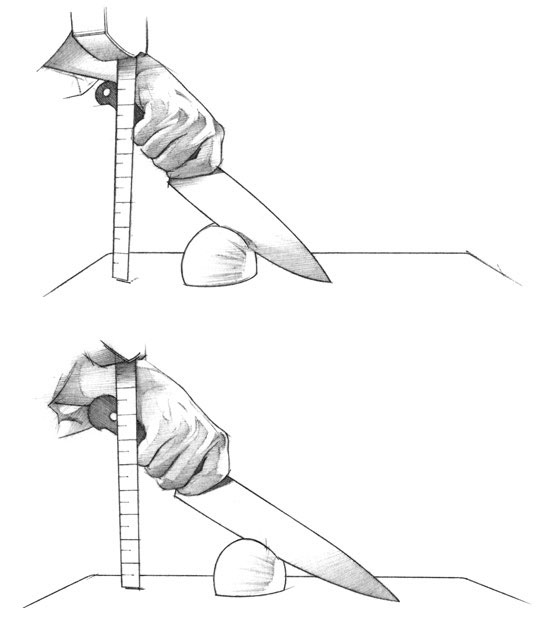Chef’s knife
The chef’s knife will be your go-to knife for the vast majority of your cutting, chopping, slicing, and dicing. With it you can carve meat and poultry, chop onions, slice tomatoes, and mince cilantro and parsley. Plus a whole lot more.
Chef’s knives generally come in three sizes: 8, 10, and 12 inches. The most popular size is the
This might seem contradictory, as it seems like you will need more effort to control a longer knife. But, if you’re slicing an onion, or almost any food, your arm and wrist will have to lift higher with a shorter blade. That’s because chef’s knives have an area that’s used most effectively for slicing and chopping. It’s like the “sweet spot” on a tennis racquet, golf club, or a baseball or cricket bat. On the chef’s knife, this is toward the back half of the blade.
This is where the weight of the knife, combined with your effort, gives you the most effective cutting area. A shorter knife has a smaller sweet spot, and it must be lifted higher for that area to cut the food. As a result, the area that actually cuts the food is smaller. This puts more strain on your wrist, arm, and shoulder. For the same cutting results, with an










